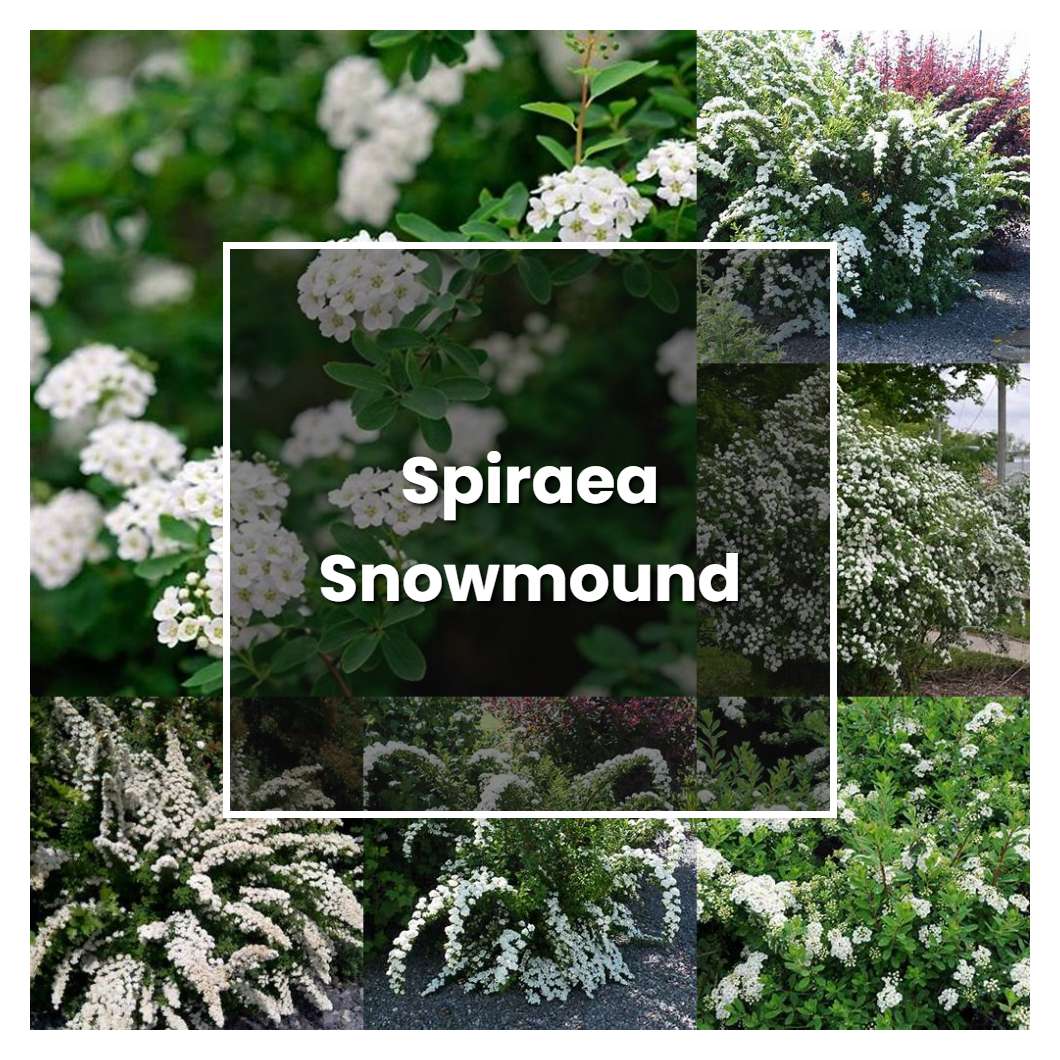Spiraea snowmound is a dense, mound-forming shrub that typically matures to 3-4 tall and as wide. It is noted for its long-flowering period from late spring to early summer when it produces an abundance of small, five-petaled, white flowers borne in large, terminal corymbs. Each flower is only about 1/4 across, but the clusters (up to 10 across) of flowers are quite showy. Foliage is medium to dark green, ovate to lanceolate, and sharply-toothed. Leaves turn yellow in fall. Bark is brownish.

Related plant:
Spiraea Grefsheim
Related plant:
Spiraea Goldflame
About soil condition, the Spiraea Snowmound prefers well-drained soil types, such as sandy or gravelly soils. It also does not tolerate flooding or extended saturated conditions. This plant is also fairly tolerant of drought once it is established.
Not too different with other plants, spirea snowmound needs sunlight to grow. However, too much sun can actually scorch the leaves, so it's important to find a balance. The plant does best in full sun to partial shade, meaning it needs at least four hours of direct sunlight each day. If you live in a hot climate, afternoon shade is best to protect the plant from the harsh rays of the sun.
The temperature condition that is best for spiraea snowmound is a cool climate. They will tolerate some heat, but they prefer cooler conditions. They will also do well in cold climates as long as they are protected from the wind.
Ideal humidity condition for this plant is around 50% The spiraea snowmound plant does best in moderate humidity levels, around 50%. Too much humidity can lead to problems with fungal growth, while too little humidity can cause the leaves to dry out and turn brown. If the air in your home is too dry, you can raise the humidity level by placing the pot on a tray of pebbles and water, or using a humidifier.
Mentioning fertilizer, this kind of plant doesn't require too much attention in that department. A light feeding in early spring is all that's needed to get it started on the right foot for the season. As for the roots, they're relatively compact and won't cause any problems in most lawns or gardens.
Pruning your Spiraea Snowmound is essential to keeping it looking its best. You'll want to remove any dead or damaged branches, as well as any that are crossing or rubbing against each other. You can also prune to control the plant's size and shape. When pruning, make sure to use sharp, clean pruning shears.
Propagation is best accomplished through softwood or semi-ripe cuttings taken in late spring or early summer. Cuttings should be taken from young, vigorous shoots that are about 6 to 8 inches in length. Cuttings should be made just below a leaf node, and the bottom leaves should be removed. The cutting should then be placed in a rooting medium, such as peat moss or sand, and kept moist until roots have developed and new growth appears.
Usually, the plant growth rate is about one foot per year. However, it can be faster or slower depending on growing conditions. The soil type, amount of sun, and amount of water all affect how fast this plant will grow.
Common problems for this kind of plant are powdery mildew, rust, and leaf spot. These can all be controlled with fungicides. However, the best way to control these diseases is to prevent them in the first place. This can be done by making sure the plant has plenty of space to breathe, and by keeping the leaves dry.
Source:
Spiraea nipponica 'Snowmound' - plantfacts.osu.edu
Snowmound Nippon Spirea (Spiraea nipponica 'Snowmound')
Spiraea nipponica 'Snowmound' habit: UIPLANTS
